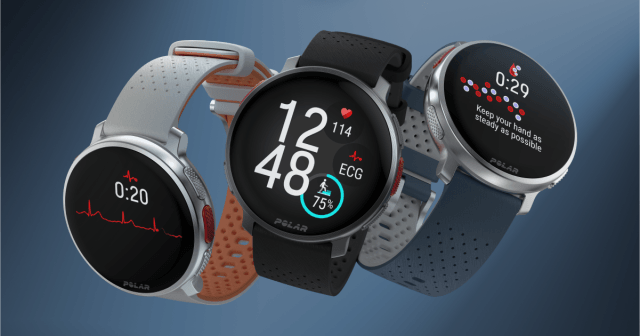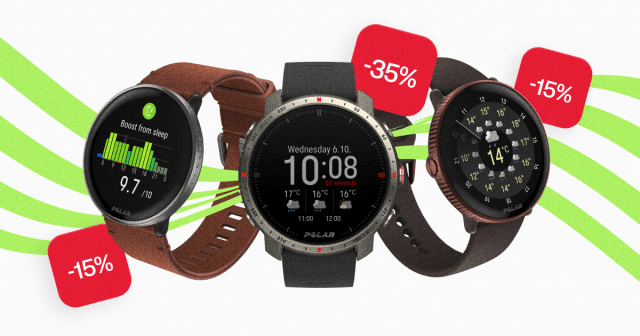Sometimes overlooked as a form of exercise, walking is a simple, phenomenal way to get more active and become healthier. Going for regular, brisk walks improves your cardiovascular fitness, reduces the risk of heart disease and stroke, alleviates depression, plus helps you maintain a healthy weight.
The popularity of walking as an exercise began in 2020 during the pandemic. Lockdowns pushed us to exercise and spend more time outdoors. A walk in the middle of the day helped break the work routine while confined in our small home offices. During our free time, instead of meeting for a coffee or a drink, many of us started meeting for a walk in the park. With gyms closed, power walks helped us stay fit. Even, walking dates became popular – there’s no better way of getting your heart up than walking while getting to know someone special.
As the world adapts to living with Covid, walking continues to be a major fitness trend and to grow across all age groups all around the world. It’s a low impact, high benefit activity, and data shows is here to stay.
Read on to find out some fun facts and figures on our walking workouts according to Polar data.
Walking is a popular choice
According to our stats, based on anonymized data of millions of Polar users, people of all ages are spending more time outdoors briskly walking. Not only we’re walking more, but we’re also more mindful of how we walk. We like to track every step we take and technology helps us nerd out on data to track our progress. As a result, the ACSM’s Health & Fitness Journal’s annual worldwide survey highlights wearable technology as a fitness trend for 2022.
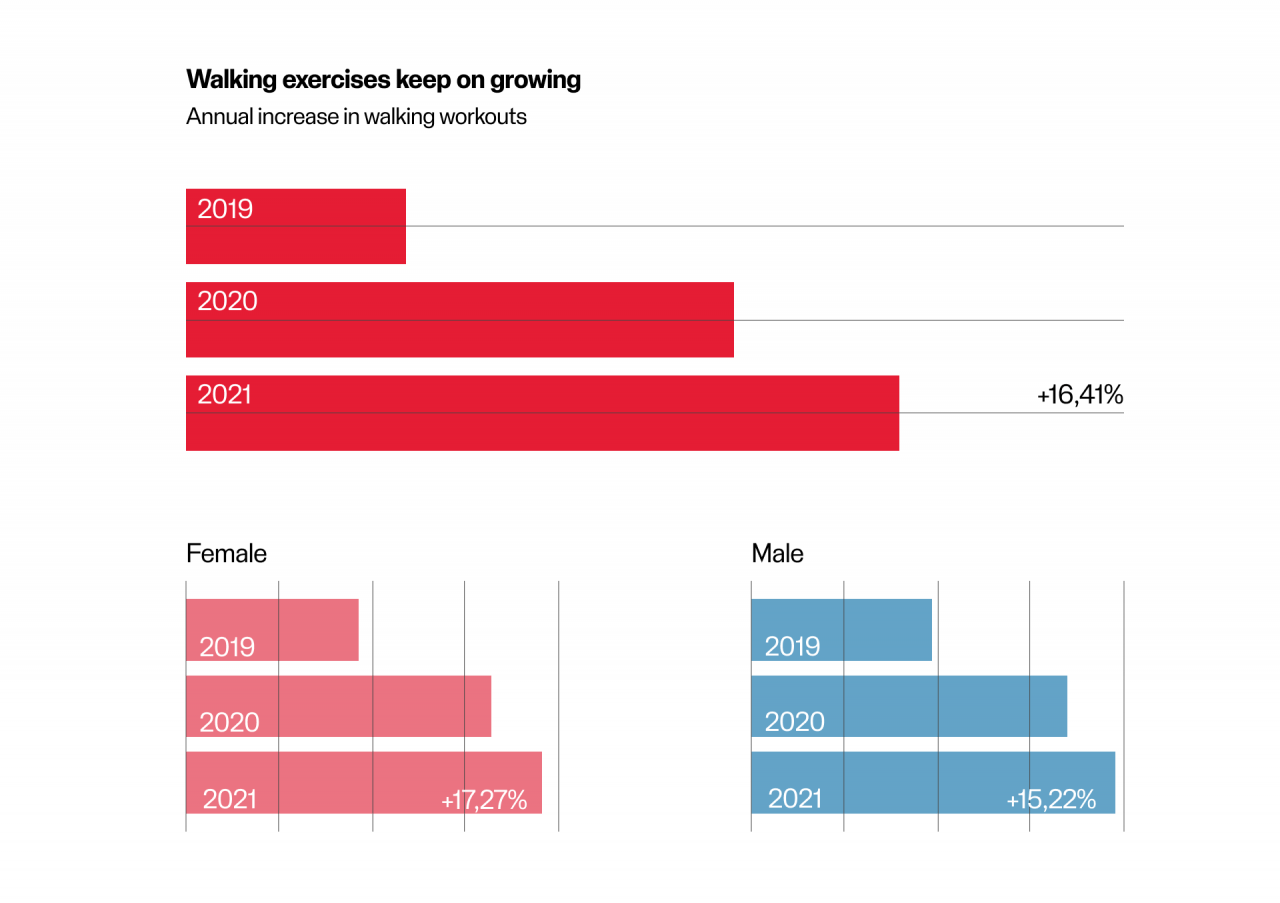
Walking workouts : An activity for all ages
Walking workouts play a big role in the exercise routine of middle-aged to elderly people. Surprisingly, young people, the so-called Gen Z cohort, are taking up on walking as an exercise, too. The activity has seen a 25% increase year over year with Polar users aged 16-19 (or –29) taking more than three walks each week.
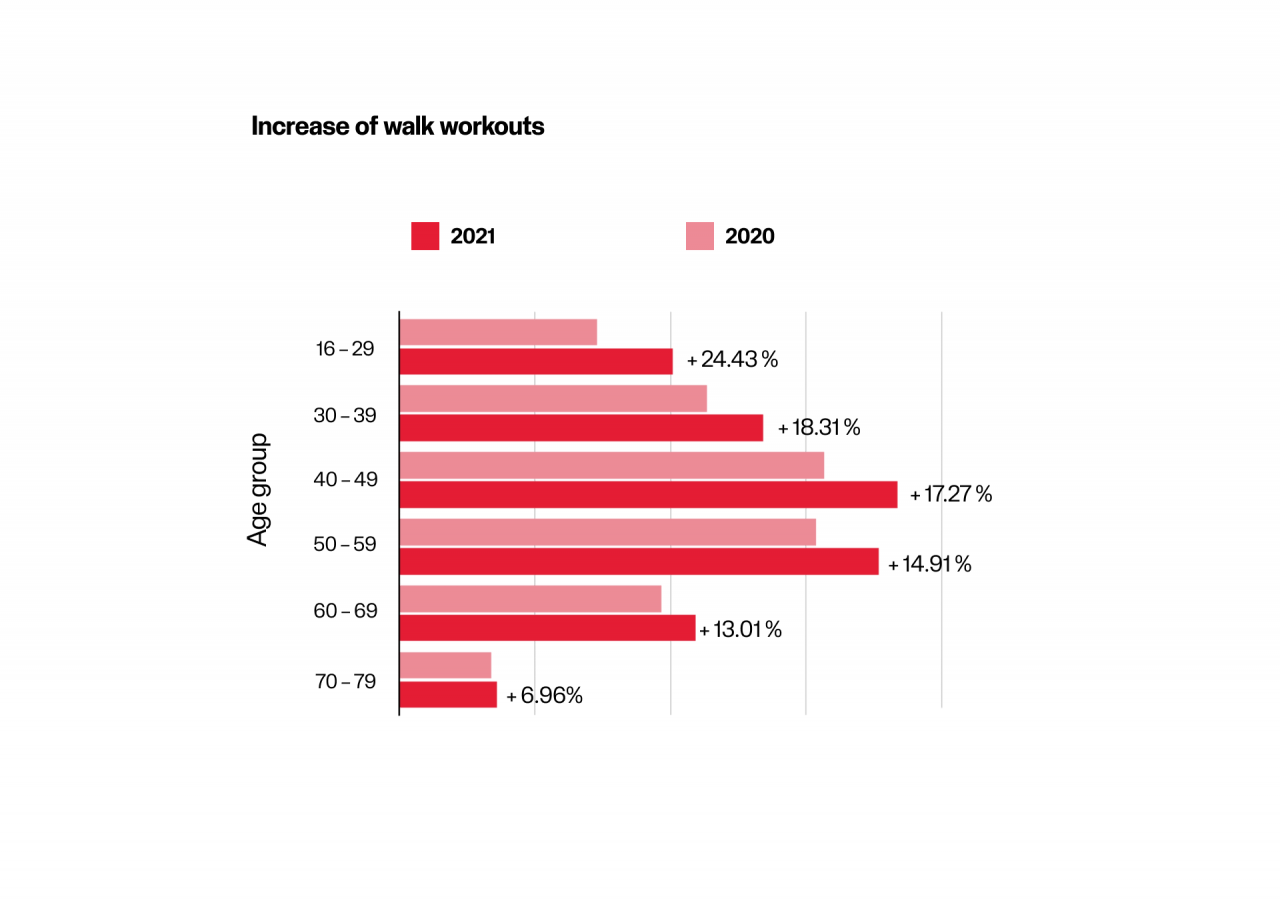
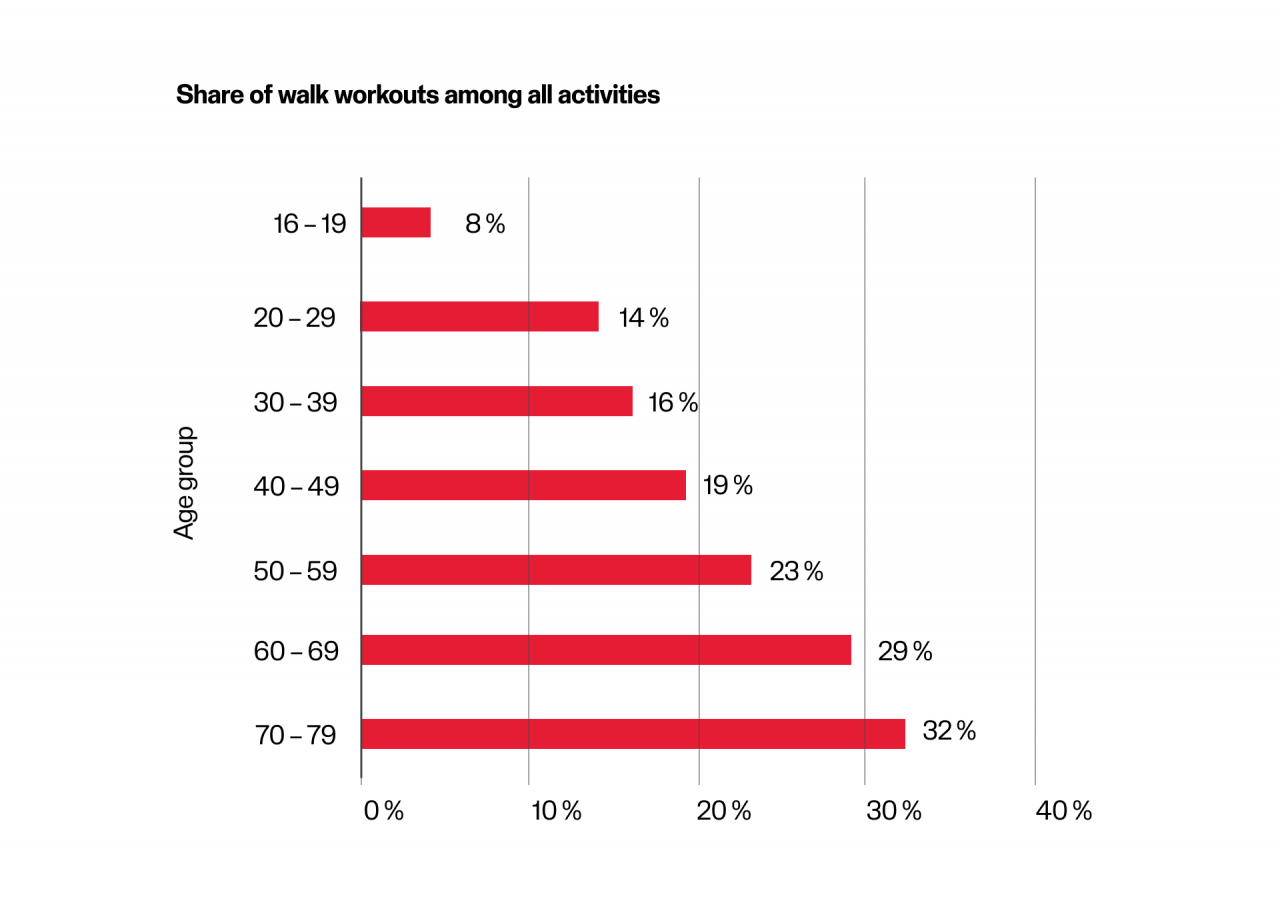
How long we walk
Just a brisk 10-minute daily walk has some health benefits, but once short walking bouts become a habit, why stop there? Polar data shows that the average walking session is more than a stroll around the block. On average a walk lasts about one hour and covers a distance of 4.5km.
Even if the walking pace is light to low-intensity, walks help us burn excess calories, balance metabolism, and, eventually, help us trim our waistline. On average, Polar users burned 364 calories per walk.
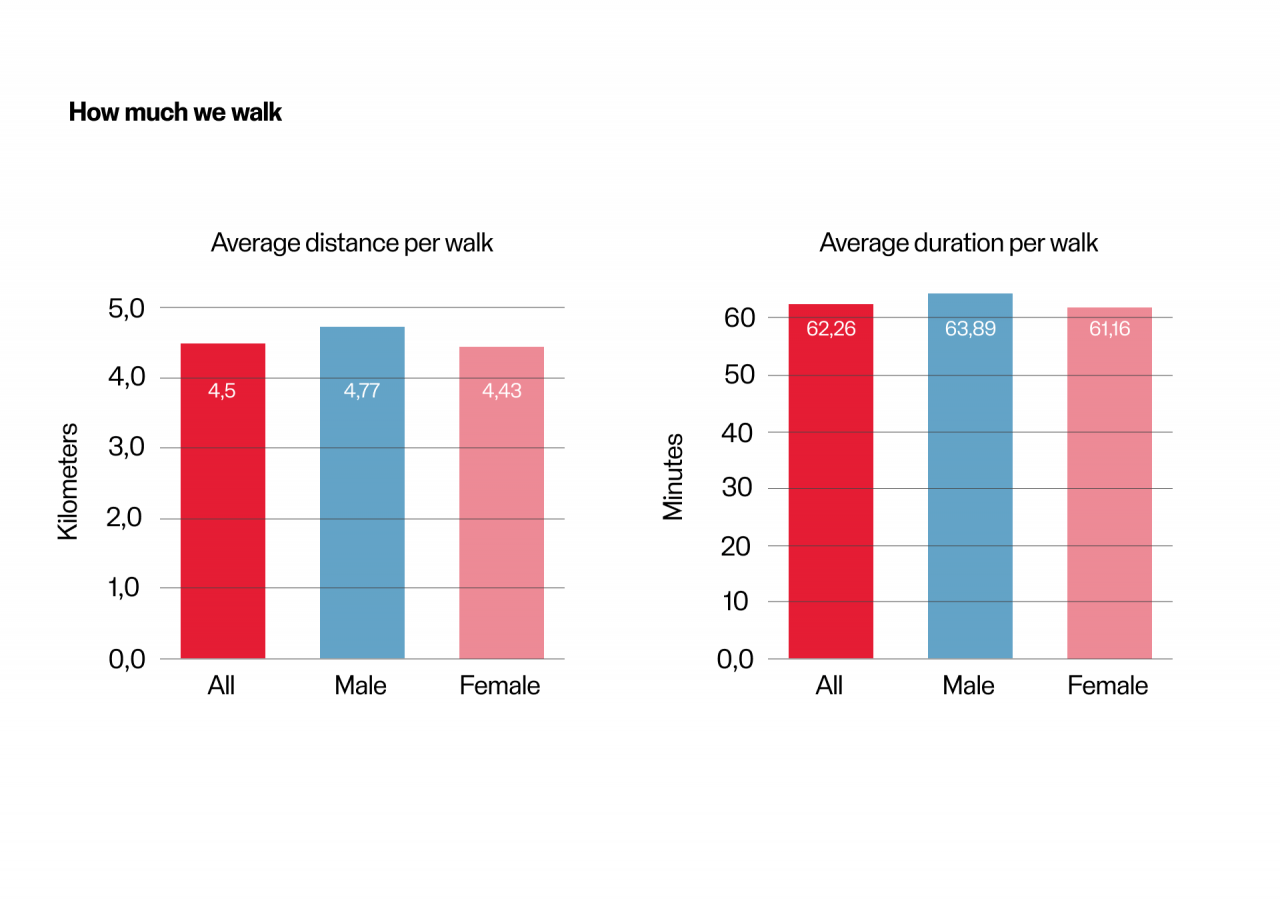
More Walking, More Steps
Evidently, the popularity of walking exercises means that we take more steps daily. In 2020, we upped our daily steps, and in 2021, we did it again. In the year 2021 Polar walkers reached 10 000 steps during the summer months, which is a good target for most adults.
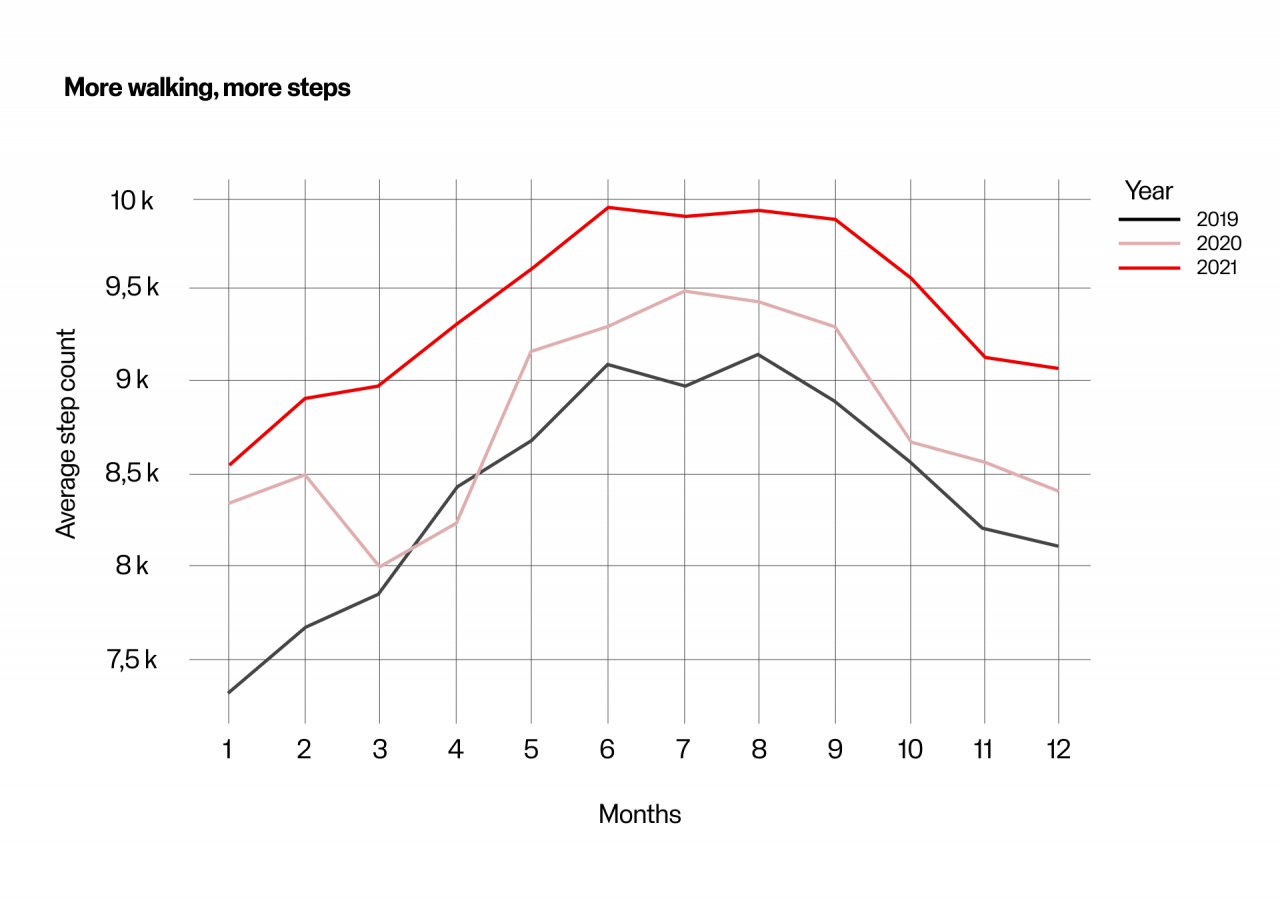
Sunday strolls
For most, walking workouts are part of their training routine and occur several times a week. Data shows that walking sessions are spread out throughout the week, with Sundays being the most popular day.
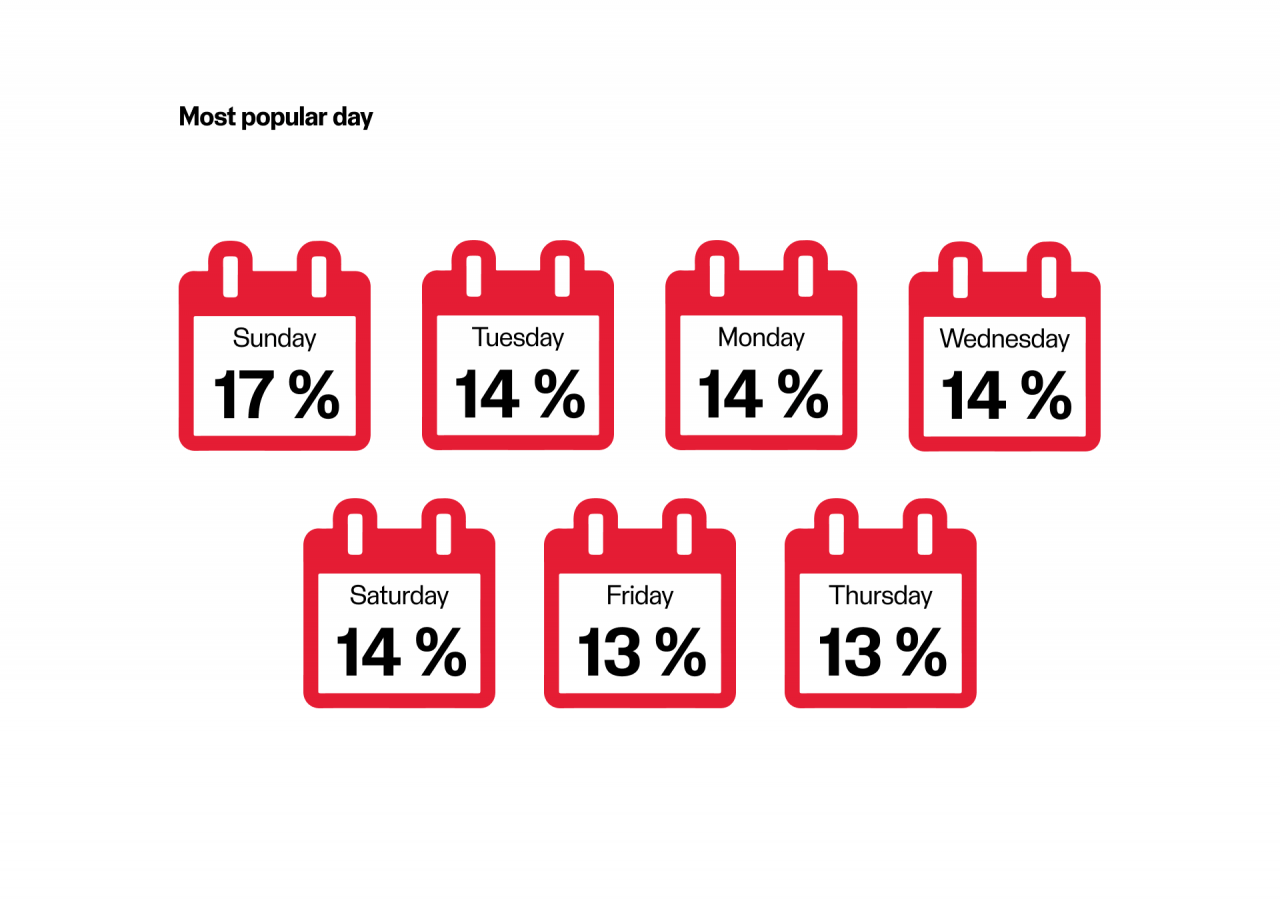
Walking: a worldwide trend
Whether it’s deep in the forests of Finland or lost in the streets of a buzzing European metropolis, the desire to spend time outdoors and walk is universal. We’re seeing walking become more popular across all the world and take a bigger share of the time spent exercising.
In several countries, nearly one out of five workouts is simply going for a power walk.
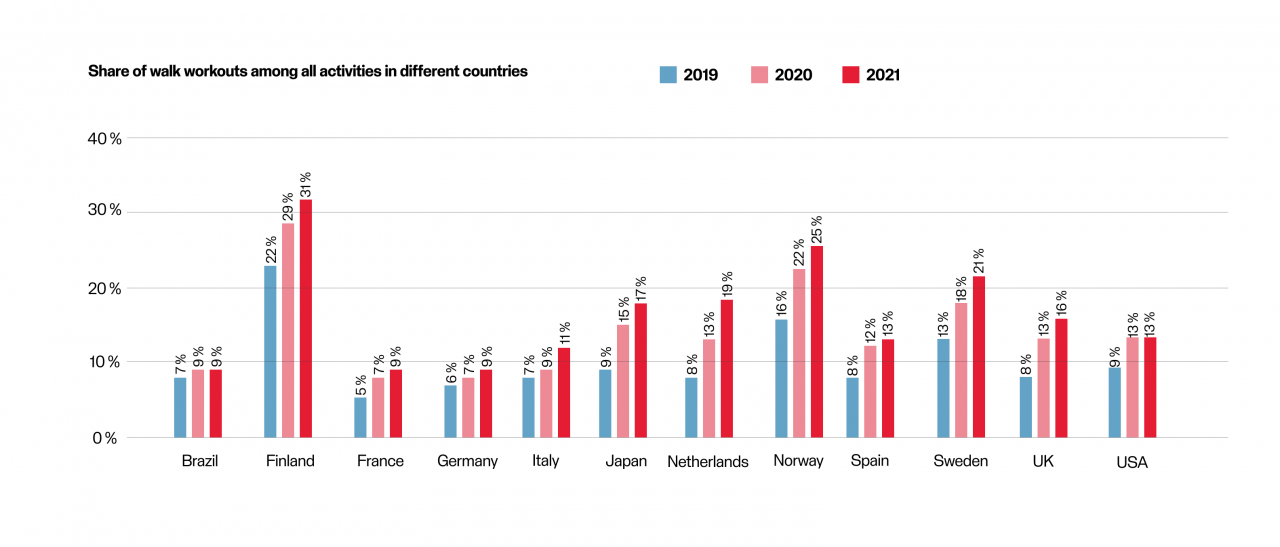
If you liked this post, don’t forget to share so that others can find it, too.
Or give it a thumbs up!
I like this article
Please note that the information provided in the Polar Blog articles cannot replace individual advice from health professionals. Please consult your physician before starting a new fitness program.

